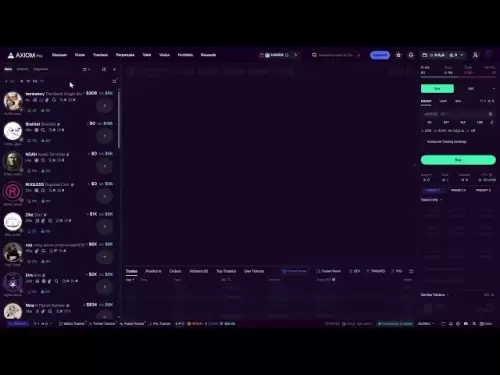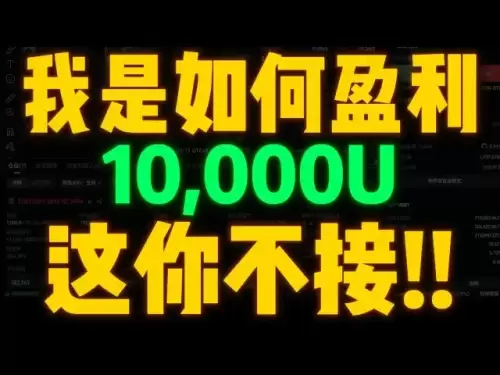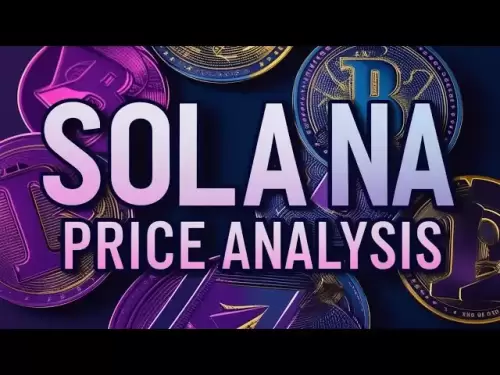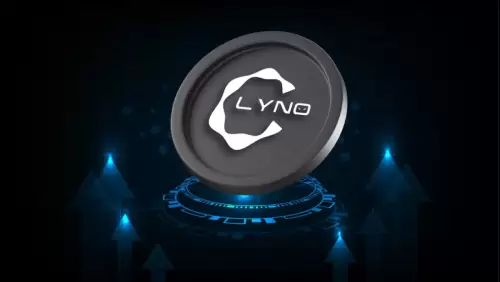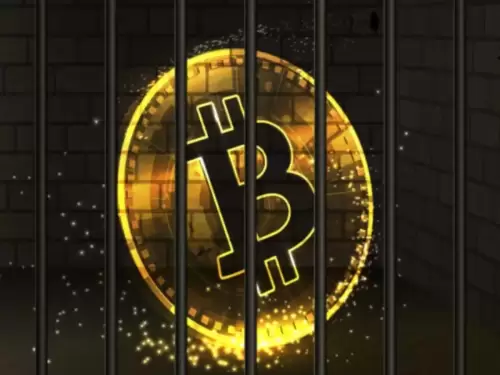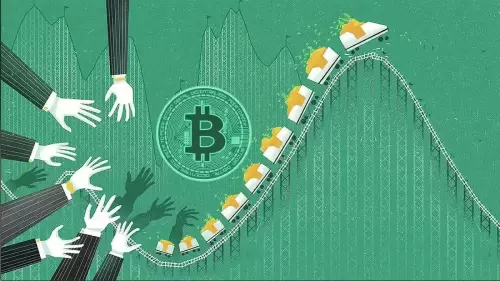 |
|
 |
|
 |
|
 |
|
 |
|
 |
|
 |
|
 |
|
 |
|
 |
|
 |
|
 |
|
 |
|
 |
|
 |
|
在加密市場中,流動性是國王,但是當資產被鎖定,流動性不足以及幾個月(甚至數年)距離歸屬時會發生什麼?

In the dynamic realm of crypto markets, liquidity is paramount, but what happens when assets are locked, illiquid, and months (or even years) away from vesting? This is the problem that SecondSwap sets out to solve.
在加密市場的動態領域,流動性至關重要,但是當資產被鎖定,流動性不足以及幾個月(甚至幾年)之遙時,會發生什麼呢?這是第二勞斯開發要解決的問題。
Speaking at the Avalanche Summit in London, CCN spoke with Kanny Lee, founder of SecondSwap, to discuss how the new platform is tackling a niche but increasingly relevant challenge: the trading of locked tokens on-chain.
CCN在倫敦的雪崩峰會上發表講話時,與Secondswap的創始人康妮·李(Kanny Lee)進行了交談,討論了新平台如何應對利基市場,但越來越相關的挑戰:鎖定令牌的交易鍊鍊。
Rise of Token Secondary Markets
代幣二級市場的上升
“Secondary markets are not a crypto invention,” begins Lee. “They’ve existed in traditional finance for years. People who invested in Facebook before the IPO sold shares through private secondary, or they sold to early employees.”
李說:“二級市場不是加密發明。” “它們已經存在於傳統金融中多年了。在IPO通過私人次要出售股票或將其出售給早期員工之前投資於Facebook的人們。”
Now, this concept is being adapted to the blockchain world. Rather than focusing on tokens already in circulation, SecondSwap targets locked or illiquid token allocations—typically held by seed investors, team members, or advisors.
現在,這個概念正在適應區塊鏈世界。第二西浪目標鎖定或流動性的代幣分配,而不是專注於已經流通的代幣,而是由種子投資者,團隊成員或顧問持有的。
“Historically, these deals happen over-the-counter with brokers manually matching buyers and sellers. It’s slow, opaque, and often fails,” says Lee.
李說:“從歷史上看,這些交易是通過手動與買家和賣家相匹配的經紀人進行的。它很慢,不透明,而且經常失敗。”
SecondSwap introduces a tri-party structure where the token foundation plays an active role from the start.
Secondswap引入了三方結構,即令牌基礎從一開始就起著積極的作用。
“We get approval from the foundation for each deal, so there’s no last-minute veto after weeks of negotiation. It turns what’s usually a legal gray area into a pre-approved, on-chain process. Foundations retain oversight, while traders get speed and clarity.”
“我們從基金會獲得了每筆交易的批准,因此經過數週的談判,沒有最後一刻的否決權。這將通常是合法的灰色區域變成了預先批准的,鏈的鏈過程。基金會保留監督,而交易者會獲得速度和清晰度。”
Why Avalanche?
為什麼要雪崩?
SecondSwap is currently built on Avalanche. Lee cites the protocol’s real-world integrations—from stablecoin-powered ride-hailing payments in Singapore to various partnerships—as a key reason for the choice.
Secondswap目前是建立在雪崩的基礎上的。李引用了該協議的現實世界一體化(從新加坡的驅車乘車付款到各種合作夥伴關係)是選擇的關鍵原因。
“Avalanche has shown traction across different sectors, not just DeFi or gaming. They’re also open to experimentation.”
“雪崩表現出了不同領域的吸引力,而不僅僅是Defi或Gaming。它們也對實驗開放。”
The integration allows users to buy locked AVAX tokens directly through the platform, which marks a first in the space, according to Lee.
李說,該集成使用戶可以直接通過平台購買鎖定的avax代幣,這標誌著該空間中的第一個。
It's Also Awaiting Payloads From Chains Like Solana, Binance Smart Chain, Ethereum, Fantom, and Polygon.
它還正在等待諸如Solana,Binance Smart Chain,以太坊,Fantom和Polygon等連鎖店的有效載荷。
Risks and Friction Points
風險和摩擦點
The model isn’t without challenges. Smart contract risk, wallet-based UX friction, and protocol-level security are all in play. Lee, a former cybersecurity specialist, says SecondSwap prioritizes segregation of funds, access controls, and transparent on-chain execution to mitigate these.
該模型並非沒有挑戰。智能合約風險,基於錢包的UX摩擦和協議級安全性都在起作用。前網絡安全專家Lee說,第二陣威優先考慮資金,訪問控制和透明的鏈上執行的隔離以減輕這些作用。
There’s also the potential for market manipulation or wash trading, but according to Lee, that’s harder to pull off on-chain.
也有市場操縱或洗滌交易的潛力,但據李說,這很難紮根。
“It’s easier to trace behavior on decentralized platforms. Tools like Dune Analytics make spoofing patterns more visible.”
“在分散平台上追踪行為更容易。《沙丘分析》這樣的工具使欺騙模式更加可見。”
Who’s Buying Locked Tokens?
誰在購買鎖定令牌?
One might assume demand is low, but Lee says it’s the opposite.
人們可能會認為需求很低,但李說,情況恰恰相反。
“We have public companies building strategic positions in layer-1 ecosystems,” he reveals.
他透露:“我們有上市公司在第1層生態系統中建立戰略立場。”
“It’s like a new version of MicroStrategy, but instead of Bitcoin, they’re stockpiling Solana or Avalanche at a discount.”
“這就像一個新版本的MicroStrategy,但他們不打折比特幣,而是以折扣價儲存Solana或Avalanche。”
The buying logic? Tokens are already locked. Investors who are bullish on an ecosystem’s long-term prospects can acquire tokens at a lower price without affecting the circulating supply.
購買邏輯?令牌已經被鎖定了。對生態系統長期前景的看漲的投資者可以以較低的價格獲取代幣,而不會影響循環供應。
A Different Way To Participate
參與的另一種方式
Unlike airdrops, which often lead to rapid selloffs, SecondSwap aims for more incentivized ownership. Community members can buy tokens at a discount, but they remain subject to the original lock terms.
與經常導致迅速拋售的氣流不同,第二西浪旨在獲得更多激勵的所有權。社區成員可以以折扣價購買令牌,但他們仍然受到原始鎖定條款的約束。
“There’s a difference between getting something for free and buying it at a discount. The latter creates more committed holders.”
“免費獲得東西和以折扣價購買之間是有區別的。後者創造了更多堅定的持有人。”
Fractional sales are also possible. Users don’t need to sell an entire allocation, just a portion, adding flexibility.
分數銷售也是可能的。用戶不需要出售整個分配,只需增加一部分即可增加靈活性。
Regulatory Node
監管節點
SecondSwap avoids direct custody or exchange roles. Instead, it integrates with KYC providers and relies on token foundations to define eligibility.
第二勞作避免了直接監護或交換角色。取而代之的是,它與KYC提供商集成在一起,並依靠令牌基礎來定義資格。
“We’re not bypassing restrictions; we’re enforcing them. Whatever a SAFT says, we follow.”
“我們沒有繞過限制;我們正在執行它們。無論如何,我們都會跟隨。”
This makes SecondSwap more of a facilitator than an exchange—a design choice aimed at reducing compliance risk.
這使得第二勞動更像是促進者,而不是交流,這是一種旨在降低合規風險的設計選擇。
Is This the Start of a New Liquidity Model?
這是新的流動性模型的開始嗎?
As of 2025, more than $37 billion worth of tokens are locked across the crypto ecosystem.
截至2025年,在加密生態系統中鎖定了價值超過370億美元的代幣。
Lee believes platforms like SecondSwap could act as “pressure relief valves,” helping move tokens into stronger hands without quickly flooding markets.
Lee認為,像Secondswap這樣的平台可以充當“壓力釋放閥”,有助於將令牌轉移到更強的手中而無需快速洪水市場。
Still, he acknowledges the biggest challenge isn’t legal or technical—it’s speed.
儘管如此,他仍然承認最大的挑戰不是合法的或技術的,這是速度。
“Foundations keep asking us to move faster. They see the need; they just want it now.”
“基金會一直要求我們更快地移動。他們看到了需求;他們現在只想要它。”
The Bigger Picture
更大的圖片
Whether SecondSwap becomes a standard tool or remains a niche solution depends on how the broader market evolves. But it’s clear the demand for smarter token liquidity is increasing as crypto matures beyond hype cycles and toward longer-term capital strategies.
第二勞動是成為標準工具還是仍然是利基解決方案取決於更廣泛的市場的發展方式。但是很明顯,隨著加密貨幣越來越多的炒作週期和長期資本策略的成熟,對更智能令牌流動性的需求正在增加。
As Lee says, “We’re not inventing a new idea. We’re adapting a proven one to the world of crypto—and trying to do it right.”
正如Lee所說:“我們不是發明一個新想法。我們正在將一個經過驗證的概念改編成Crypto世界,並試圖正確地做到這一點。”
免責聲明:info@kdj.com
所提供的資訊並非交易建議。 kDJ.com對任何基於本文提供的資訊進行的投資不承擔任何責任。加密貨幣波動性較大,建議您充分研究後謹慎投資!
如果您認為本網站使用的內容侵犯了您的版權,請立即聯絡我們(info@kdj.com),我們將及時刪除。
-

- Lyno令牌預售:Defi中的AI套利革命
- 2025-07-31 04:01:35
- Lyno推出了代幣預售,並提供了AI驅動的跨鏈套利協議的早期訪問權限。這是下一個BNB嗎?
-

-

- AML比特幣欺詐:在大蘋果和其他地區打擊加密犯罪
- 2025-07-31 03:48:54
- AML比特幣案強調了加密業務的日益審查。監管機構正在打擊利用數字資產的分散性質的騙局。
-

- Cardano(ADA)在2025年:導航加密貨幣的未來
- 2025-07-31 02:00:52
- Cardano(ADA)會突破阻力達到$ 4,還是降至0.51美元?這是2025年Cardano前景的細分。
-

-

- 比特幣的看漲前景:加密量值對未來市場冷卻的見解
- 2025-07-31 01:54:08
- CryptoQuant的分析表明,由於期貨市場的冷卻,比特幣的集會處於堅實的基礎上,表明有機需求和投機壓力降低。
-

-

-

- 模因硬幣,投資回報率和貓硬幣:加密貨幣中的purr-fect風暴?
- 2025-07-31 01:15:00
- 探索模因硬幣的熱潮,ROI潛力以及以貓主題的加密貨幣的興起,例如西蒙的貓和拖釣貓。



















